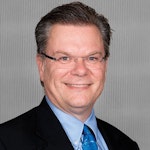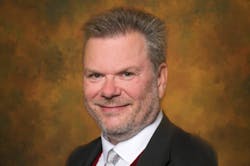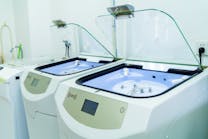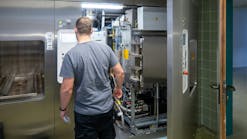PHOENIX — One of the influential speakers at the 60th Annual Conference and Expo of the International Association of Healthcare Central Service Materiel Management lobbed a snarky quip that piqued my curiosity.
I won’t reveal the source, of course, but near the end of his presentation this crafty individual encouraged the SPD audience to “make friends with epidemiology [your organization’s infection preventionist] because like with the Pope, when they say something, things will happen.”
Chuckles immediately reverberated throughout the room because most everyone recognized that if SPD professionals felt disrespected or ignored about some cleaning, disinfecting or sterilizing issue — they are the experts here — they should call on the infection preventionist as the proverbial heroic white knight who not only has the ear of the Operating Room, but also the C-Suite, and represents one of the important sources of information when The Joint Commission arrives.
This SPD leader’s bon mot reminded me of a “Fast Foreward” column I penned and published post-AORN Congress in the May 2012 edition of HPN, headlined “Sterility insurance.” In that column, I posited that healthcare organizations create a new C-Suite post under which they reorganize some of the foundational functions of the provider realm as critical and integral to the health and welfare of the patients, the clinicians and the buildings in which they share space: Senior Vice President of Clinical and Environmental Sterility (CES) a k a the Chief Sterility Officer (CSO).
Six years later, maybe it’s time to revisit the idea again.
Historically, SPD (or Central Service) reported up through Materials Management or Surgical Services, depending on who wanted to oversee the discipline and how deeply SPD delved into inventory management. Typically, if SPD leaned more heavily toward device reprocessing it reported through the OR as its primary customer, but if it practiced more of a “central supply” role it fell under Materials Management’s purview.
In the ensuing years, just as Supply Chain shifted its reporting structure to the CFO from the COO, SPD migrated more to the OR from Supply Chain.
But if you view the relationship between Supply Chain, OR and SPD through a prism you’ll likely recognize Supply Chain as fortifying the work, the OR performing the work in a sterile environment to start, and SPD handling clean-up for devices and Housekeeping or Environmental Services the rest. To a degree, the Infection Preventionist (usually one or two clinicians composing a “department”) ensures that sterile policies and procedures are followed, “making things happen,” to a degree.
Some might argue in favor of SPD reporting up through Surgical Services because SPD pros directly reprocess devices for doctors and nurses. Why shouldn’t those communication lines be direct? They should. But that centers on the functional.
Perhaps the focus should shift to the foundational instead. For the patient’s path to surgery, the OR represents the destination. Supply Chain and SPD represent the journey before and afterward. In the OR, everything starts out sterile before all becomes soiled during the surgical procedure.
On the org chart, Infection Prevention (Epidemiology), Sterile Processing, Environmental Services and Laundry all would report up to the CSO, likely a certified and credentialed IP clinician.
At core, this august group would claim ownership of the cleanliness and sterility of the entire organization. As air, steam and water must be clean (emphasized here at IAHCSMM 60), CES would oversee those utility features of facilities management.
Mandatory OR pre-cleaning (rinsing/soaking/spraying) of used instruments immediately following their use to prevent solidification and crusting of bioburden and the formation of biofilms represented another pressing theme. Failure of the OR to comply with this “requested” task seriously impedes and slows device reprocessing turnaround and accept much of the blame for this rather than passing it off to Sterile Processing. The CSO can force the issue by embedding a dedicated CES staffer within the OR.
Until then, one speaker challenged SPD pros to hold the OR staff accountable for this task, but do it in consultative/facilitative way that makes it seem okay. Her winning philosophy? “How can SPD help them help SPD?” Think about it.

Rick Dana Barlow | Senior Editor
Rick Dana Barlow is Senior Editor for Healthcare Purchasing News, an Endeavor Business Media publication. He can be reached at [email protected].





